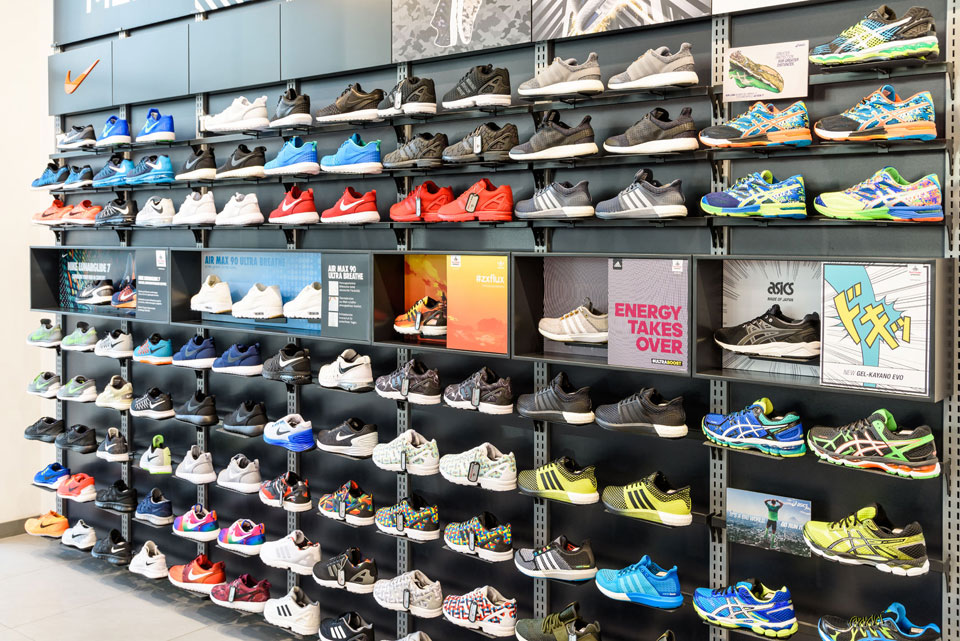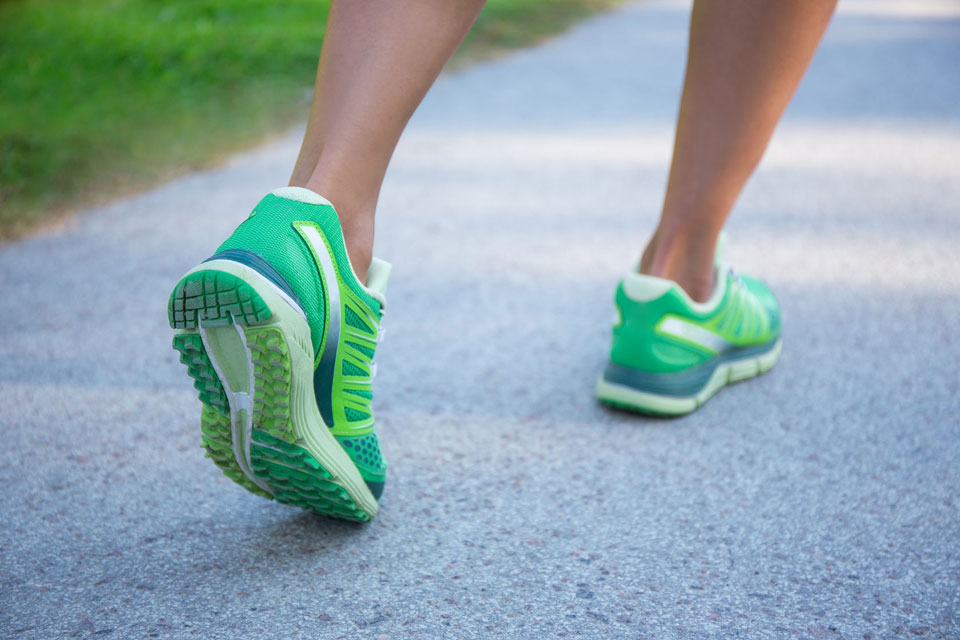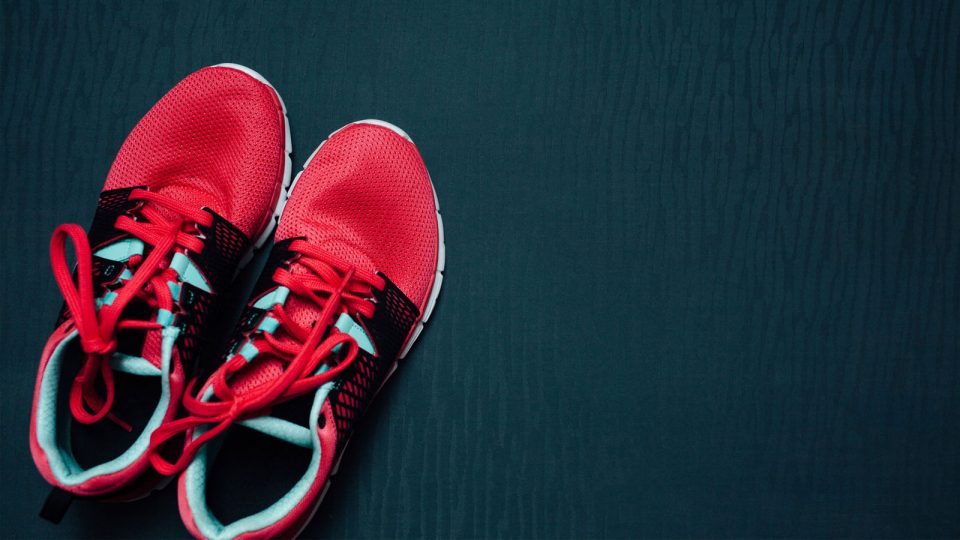Do you love puzzles? Of course you do. They’re fun, challenging and they focus the mind—descriptors you may already use when you talk about how it feels to run. But there are some puzzles that aren’t as easily solved. For example, did you know that running shoes have “secret lives”?
It’s true. They’re constructed in some of the most exotic, mysterious places on earth and they travel a lot, but without passports.
By the time they wind up in stores, on the internet or in your closet, they’ve got stories to tell and one thing we guarantee you: after you read this article, you’ll never look at another pair of running shoes in exactly the same way you once did.
A brief history of shoes
Once upon a time, cobblers took time to fashion shoes with the same care Renaissance artists took perfecting their masterpieces, but the shoemaking legacy they launched had even deeper roots: the making of foot coverings can be traced back to primitive hunters and gatherers who used animal skin pieces to keep their feet from sustaining injuries and freezing in cold weather.
As time passed, smaller animals were caught and skinned specifically for making foot coverings, and as man evolved and crop cultivation became commonplace, shoemakers used vegetation to hold shoe sections together (think corn husks) so the process leading to shoe construction grew more complex.
Some shoemakers were more talented than others, so they set up businesses in their villages and took orders from townspeople. Eventually, standardised shoemaking morphed into custom fits and by 1750, markets and shoe shops offered the wares of many shoemakers, thus the beginning of an industry was born.
With industrialisation, manufacturers gained access to railroads and boats that shipped their ready-made shoes to markets throughout regions, and in some cases, wound up on cargo ships that crossed seas from nation to nation. The industrial revolution’s biggest contribution to shoe manufacturing arrived in the form of the invention of mass production and assembly lines.
Despite the turmoil associated with two world wars, armies and societies still needed shoes, but because raw materials were difficult to obtain, shoemakers began to substitute other materials to compensate for a lack of leather.
The majority of today’s manufacturers are headquartered in the far east where the availability of raw materials and affordable labour has turned Korea, India and China into manufacturing epicenters.

But, you want to know about running shoes!
Running shoes (also called sneakers and trainers) have been crafted for over 200 years. The English demand for a lightweight shoe that could be worn to engage in sports first appeared in market stalls in the 18th century.
A shoemaker named Wait Webster affixed the first rubber sole to leather shoes and boots in 1832, according to the LA Research Project. The creation of the first shoe made strictly for sport and play was available only in children’s sizes. These shoes were called Plimsols and demand for them was heavy.
In 1852, Brit Joseph William Foster founded the Boulton Shoe Company. His most brilliant idea came to fruition when he improved upon Webster’s Plimsols by adding spikes to the undersoles. Foster’s company has gone through myriad changes since its 1852 founding, and these days, you know the company by its contemporary name: Reebok.
But perhaps the most revolutionary event in the history of running shoes was the invention of a process called vulcanisation. This clever sole-making idea uses heat to melt fabric and rubber together so the soles on lightweight athletic shoes can be embellished with proprietary designs that help athletes grip surfaces more efficiently.
Who’s the father of the modern running shoe?
Historians point to Adolf Dassler. In 1920, the shoemaker innovated a method of hand-forging running spikes that were custom-made for specific distances. A long-distance runner, Dassler believed, needed a shoe that performed differently from the type required by a sprinter.
For decades, he remained the pre-eminent athletic shoe maker on the planet, which is why professional athletes like Jesse Owens, who wore Dasslers at the 1936 Olympics to win his gold medals, wanted nothing other than the Dassler brand on their feet. Lots of athletes still feel this way about the shoe companies that carry on the Dassler legacy: Adidas and Puma.
No history of athletic shoes would be complete without mentioning Mr. Onitsuka, who survived post-war Japan to become Asia’s preeminent athletic shoe manufacturer. His initial mission in 1949, to provide shoes for homeless children in the aftermath of Japan’s recovery from World War II, ultimately became the inspiration for ASICS that established one of the strongest Asian brands in the history of athletic shoe making.

Why are running shoes so expensive?
The mystery of how much today’s running shoes cost is likely to astound you, so you may wish to sit down while you read this section of our article. To investigate the true story of manufacturing cost, solereview.com examined 22 shoe models that regularly appear on consumer popularity lists.
What researchers found is jaw-dropping: a pair of Adidas Energy Boost 3 athletic shoes, priced at $160, cost $30 to make.
How can this happen — particularly when you factor in a profit made by the company of just 4.1-percent? Because it takes multiple industries, people, paperwork and bureaucracy to get shoes from factories to shoe store shelves.
The term that has been coined to describe this initial process is referred to as, “landed cost.” That’s the amount of money already invested into the shoe when it arrives at its destination.
For example, it costs $20 to fabricate shoes at a factory in China, but as soon as they’re made, these costs are added: $1 to ship the product, $.30 to insure the shoe against loss or damage and there’s a $3 processing fee added by customs. The shoes “land” at their destination with a price tag that now reads $24.30 so to make a profit, the manufacturer sells the shoe to retailers, adding another 50-percent mark-up, bringing the cost of the shoe to $50.
But that’s not the end. For the shoe to command that $160 retail price point, all manner of extra costs come to bear on the shoes: company operational expenses. Salaries of staff and employees. Taxes. Promotional costs (e.g., expenses associated with staging a brand-sponsored marathon).
Factor in such extras as company investor payback and a $1.50 add-on per $100 retail price to cover the cost of celebrity endorsers like Kenyan runner Usain Bolt and LeBron James, and you can see why, once the retailer marks up shoes to get his margin, that $160 price is where you and your plastic enter the picture!

Want shoes that don’t cost a fortune?
Having come out of your plastic bubble of tranquillity now that you’ve learned the true cost of retail athletic shoes, are there steps you can take to own quality shoes while not feeling like you’ve been ripped off? Of course. Consider the following solutions employed by thrifty Singaporeans every day:
- Must you buy a pair of shoes immediately after they hit the market? The true cost of a new shoe is at its zenith when it first debuts because bricks and mortar retailers and websites know that the excitement of selling a new shoe often turns consumers into puddles of sweet and sour sauce. Further, that hefty mark-up helps retailers keep shoes on display that aren’t selling very fast.
- Do your homework. How much time does it take to comparison shop if you’ve got a fast mouse, a fast processor, the latest device and a search engine you trust? Not much. Even if the amount you save is minimal, extras like free shipping or in-store marketing programs can add up over time, so satisfy your inner sceptic and find discounts, sales and clearance deals before you arrive at malls and boutiques so you are prepared to pay a certain price for your shoes based on your research.
- Troll discounters. If you haven’t been to Mustafa Centre (the only shopping hub open 24/7), gone budget shopping during sales period at retail stores or to Bugis Street where 600 shops await, Lucky Plaza (if messy and disorganized make you crazy, skip this one) or Far East Plaza, you’ve missed a cultural experience. Not as well established, but home to discounted, branded stuff at from 30-to-70-percent off, is Anchorpoint Shopping Centre. Shop these places for the fun of it and athletic shoe savings: the gross margin for a high-end retailer is 34-percent, but it’s only 29-percent if products are sold to a discounter. In the end, you benefit.
- Stay home and shop in cyberspace. It stands to reason that the markup on consumer goods like athletic shoes is going to be lower simply because there’s no retail store chain burdened with rent, utilities, salaries, insurance and overhead, but that doesn’t mean online businesses are absolved of such expenses. After all, fulfilment houses and distributors must be staffed up to pick and pack shoe orders, pay salaries and benefits and then get the product into consumer’s hands. When you see an ad that promises “Free shipping if you spend over $50!” count on the shipping cost being built into the shoes at sites like Overstock, Kickz, Zappos and Amazon.
- Knock-offs. Imitation goods are not only illegal but they’re morally negligent because they cheat manufacturers and steal original, proprietary art. Further, just because you see a familiar logo stamped on a shoe, this doesn’t mean they’re not fakes. Knock offs rarely hold up or perform as well as the real thing. Churned out by small factories, knock-offs are made of lower grade materials and there have been enough scandals associated with these enterprises to write a book about them. The decision to buy a knock off is between you and conscience, as long as you’re aware that by buying counterfeit shoes, you’re condoning slave labour wages, unhealthy factory conditions and flaunting any number of international intellectual property laws.

Singaporeans ask: Why are my shoes so expensive?
Now this is a true mystery. As of 2015, 41-percent of all athletic shoes produced by Adidas were manufactured in Vietnam, 24-percent in Indonesia and 23-percent in China. They’re neighbours, for heaven’s sake — why don’t we get the friends and family discount you ask? In fact, athletic shoes, like all goods, tend to reflect a nation’s general cost of living, since everything in Singapore is expensive, shoes are no exception.
But are shoes really that expensive in Singapore? Not according to Trip Advisor reviewers who swear they get better shoe pricing in Singapore than they do back home, so you might conclude that, like beauty in the eye of the beholder, the disparity in shoe prices is simply reflected in the eyes of shoppers who are so conditioned to paying more for goods and service, it just feels as though those athletic shoes cost more, too!
Does the true story behind the cost of your athletic shoes shock you or surprise you? We’d love to hear your thoughts on this topic.




